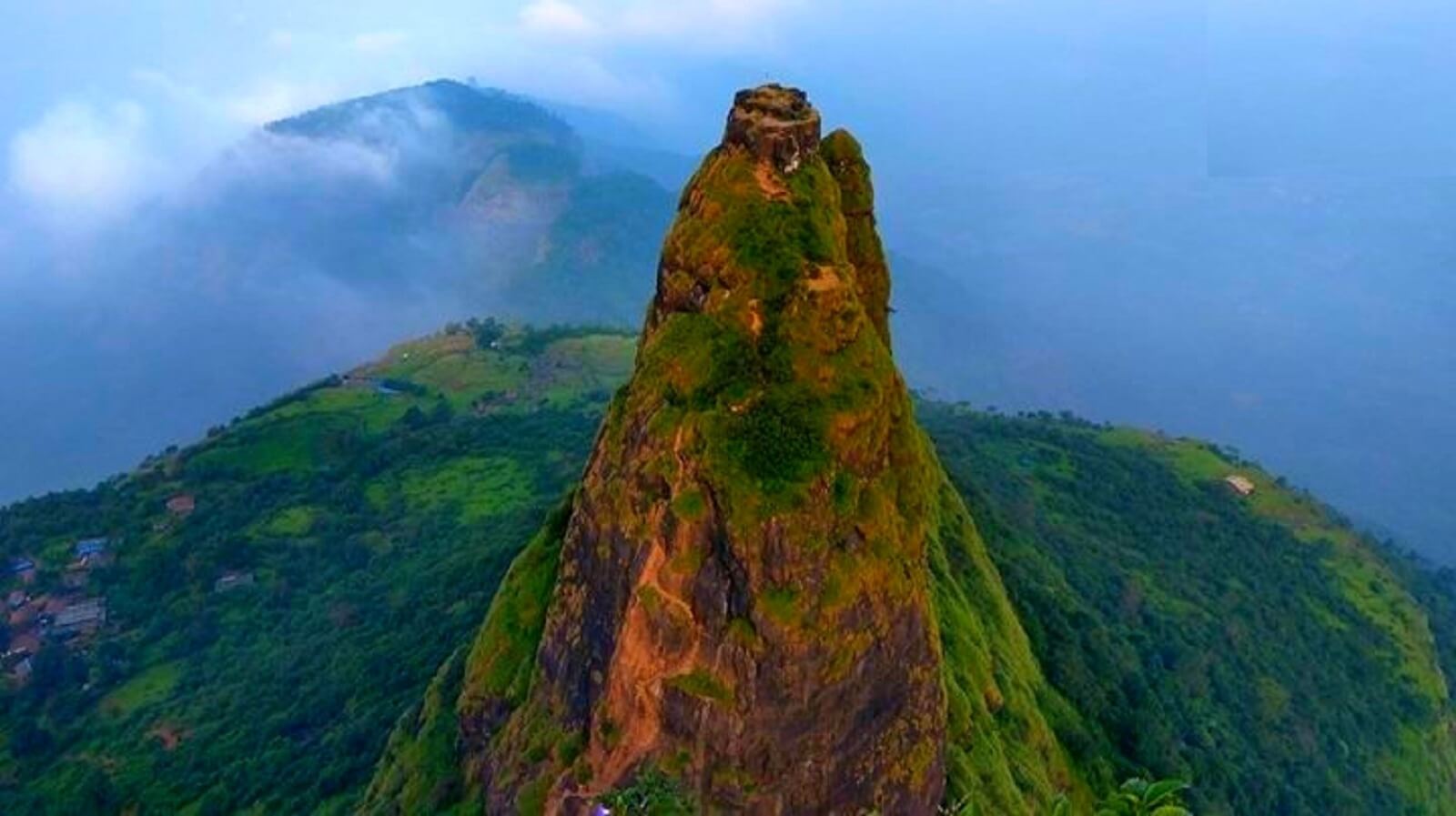Hill Stations
Harishchandragad
Nestled amidst the Sahyadri mountains of Maharashtra, India, Harishchandragad stands as a majestic testament to history and nature’s grandeur. This ancient hill fort, towering over the landscape at an elevation of 4,670 feet, has captivated the hearts of adventurers and history enthusiasts for centuries.
Historical Significance
Harishchandragad’s origins can be traced back to the 6th century, during the reign of the Kalachuri dynasty. The fort’s strategic location, overlooking the Malshej Ghat, made it a crucial stronghold for controlling the region’s trade routes and guarding against invaders. Over the years, the fort witnessed numerous battles, passing through the hands of various rulers, including the Mughals and the Marathas.
Trekking Trails and Natural Beauty
Today, Harishchandragad is a popular trekking destination, attracting enthusiasts from all over the country. The fort offers two main trekking routes: the Junnar Gate route and the Nalichi Wat route. Both routes provide a challenging yet rewarding experience, taking trekkers through dense forests, across rugged terrain, and up steep inclines.
The fort’s summit boasts breathtaking views of the surrounding hills, valleys, and the glistening waters of the Bhandardara Lake. The serene atmosphere and the tranquility of the mountains provide a welcome respite from the hustle and bustle of city life.
Points of Interest
- Harishchandra Temple: Dedicated to Lord Shiva, this temple is believed to have been constructed during the 11th century.
- Kedareshwar Cave: This cave temple houses an idol of Lord Shiva and offers scenic views of the surroundings.
- Taramati and Rohidas Peaks: These two peaks are named after legendary characters from the story of Raja Harishchandra.
- Saptatheertha Pushkarni: This ancient water tank is said to have medicinal properties.
Best Time to Visit
The ideal time to visit Harishchandragad is during the monsoon season (June to September) when the waterfalls are in full flow and the greenery is at its peak. However, the fort can also be visited during the winter months (October to March) when the weather is pleasant and sunny.
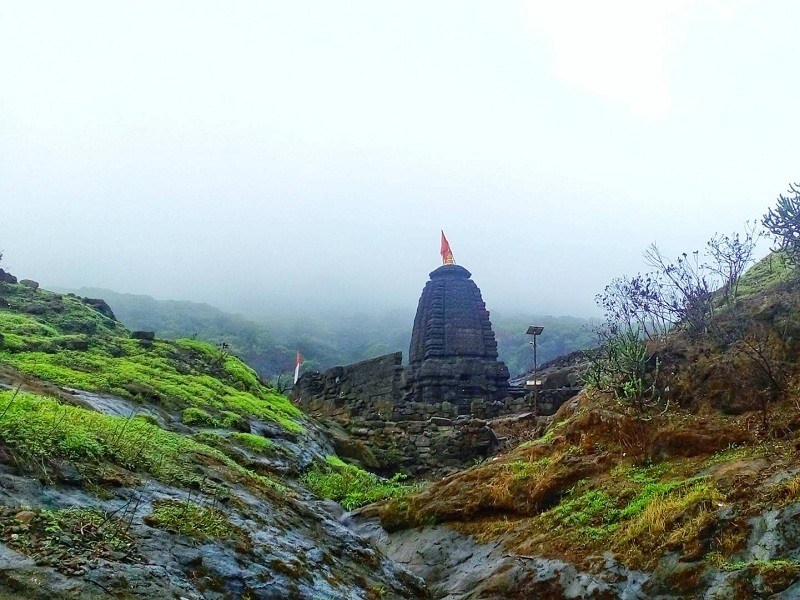
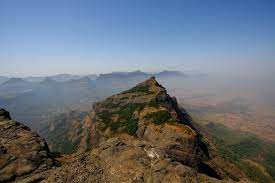
Rajmachi information
Rajmachi is a popular destination for trekking and outdoor activities, located in the Sahyadri mountain range of the Western Ghats in Maharashtra, India. It is known for its ancient forts, lush greenery, and panoramic views. There are two forts at Rajmachi – Shrivardhan Fort and Manaranjan Fort.
Here is some information about Rajmachi:
Location:
Rajmachi is situated in the Sahyadri mountain range in the Lonavala region of Maharashtra. It is approximately 15 kilometers from Lonavala.
Trekking to Rajmachi:
Trekking to Rajmachi is a popular activity, and there are two main trekking routes. One route starts from Lonavala, and the other starts from the Karjat side. Both routes offer scenic views, dense forests, and a relatively moderate trekking experience.
Fortresses:
Rajmachi has two forts – Shrivardhan Fort and Manaranjan Fort. Shrivardhan Fort is the larger of the two and offers a panoramic view of the Sahyadri mountain range. Manaranjan Fort is smaller and lies to the east of Shrivardhan Fort.
Historical Significance:
The forts of Rajmachi have historical significance and were built by various rulers over the centuries. The forts have witnessed the rise and fall of several dynasties.
Camping:
Rajmachi is a popular destination for camping. Many trekking groups and adventure enthusiasts organize overnight camping trips, allowing participants to experience the serene environment and starry nights.
Best Time to Visit:
The best time to visit Rajmachi is during the monsoon and winter months when the weather is pleasant, and the surroundings are lush green. However, it’s essential to be cautious during the monsoon due to slippery trails.
Village Experience:
The base village of Rajmachi is Udhewadi, which provides a glimpse into the rural lifestyle. Visitors can interact with the local villagers and experience the local culture.
Access:
Rajmachi is accessible by road from Lonavala, and it takes about 2-3 hours to reach the base village by trekking. Vehicles can also reach a certain point, and from there, visitors can trek to the forts.
Waterfalls and Scenic Views:
During the monsoon season, the region around Rajmachi is dotted with numerous waterfalls, adding to the scenic beauty. The trek offers panoramic views of the surrounding valleys and hills.
Before planning a trip to Rajmachi, it’s advisable to check the current trekking conditions, weather forecasts, and obtain any necessary permits. Trekking to Rajmachi is a rewarding experience for nature and adventure enthusiasts.
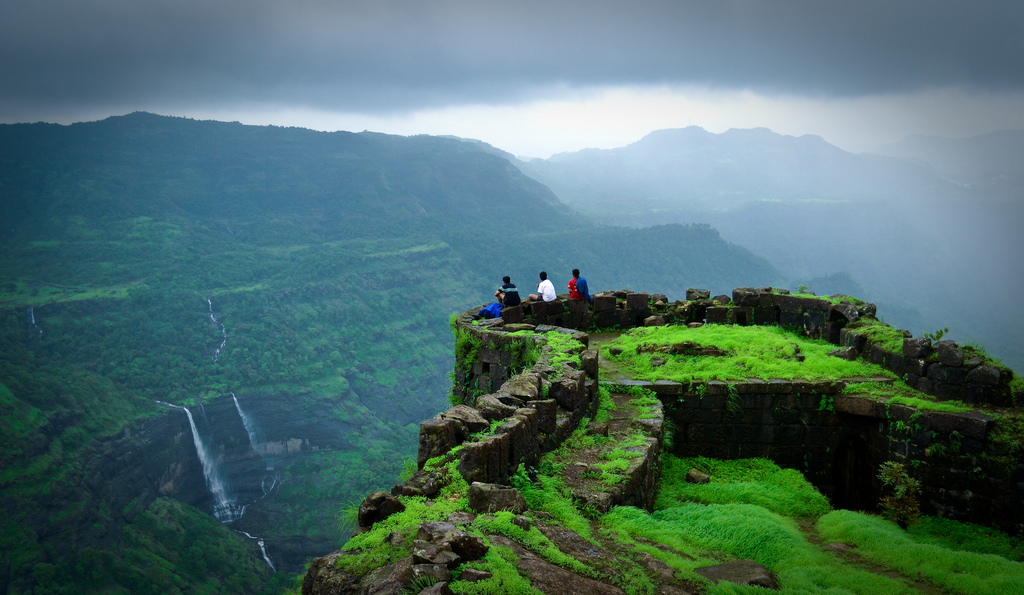

Kalsubai Peak
Kalsubai is the highest peak in the Western Ghats of Maharashtra, India. It is a popular trekking destination and a significant landmark in the Sahyadri mountain range. Here’s some information about Kalsubai Peak:
Location:
Kalsubai is located in the Ahmednagar district of Maharashtra. It is situated within the Kalsubai Harishchandragad Wildlife Sanctuary.
Elevation:
Kalsubai Peak stands at an elevation of 1,646 meters (5,400 feet) above sea level, making it the highest peak in Maharashtra.
Trekking to Kalsubai:
The trek to Kalsubai is a popular activity for adventure enthusiasts. The trek starts from the base village of Bari, which is about 164 kilometers from Mumbai. The trail passes through lush green landscapes, rocky terrain, and involves climbing steep stairs.
Duration of Trek:
The trek to Kalsubai usually takes around 3-4 hours to ascend and 2-3 hours to descend, depending on individual fitness levels and weather conditions.
View from the Top:
The summit of Kalsubai offers panoramic views of the surrounding Sahyadri mountain range, including prominent peaks such as Ratangad, Harishchandragad, and the Bhandardara Dam. The view is particularly stunning during sunrise.
Temple at the Summit:
At the top of Kalsubai, there is a small temple dedicated to Kalsubai Devi. The temple is a popular pilgrimage site and attracts devotees, especially during the Navratri festival.
Best Time to Visit:
The best time to trek to Kalsubai is during the post-monsoon and winter months (October to March) when the weather is pleasant. Monsoon treks are also popular but require caution due to slippery trails.
Difficulty Level:
While the trek to Kalsubai is considered moderate, the steep climb towards the summit can be challenging for beginners. It is advisable to wear proper trekking gear and carry sufficient water and snacks.
Access:
The base village of Bari is accessible by road, and several trekking groups organize guided treks to Kalsubai from Mumbai and Pune.
Accommodation:
While camping is not officially allowed at the summit, trekkers can find accommodation options in the base village of Bari and nearby areas.
Before planning a trek to Kalsubai, it’s important to check the current trekking conditions, weather forecasts, and ensure that you are well-prepared for the climb. Trekking to Kalsubai is a rewarding experience, offering breathtaking views and a sense of accomplishment for reaching the highest point in Maharashtra.
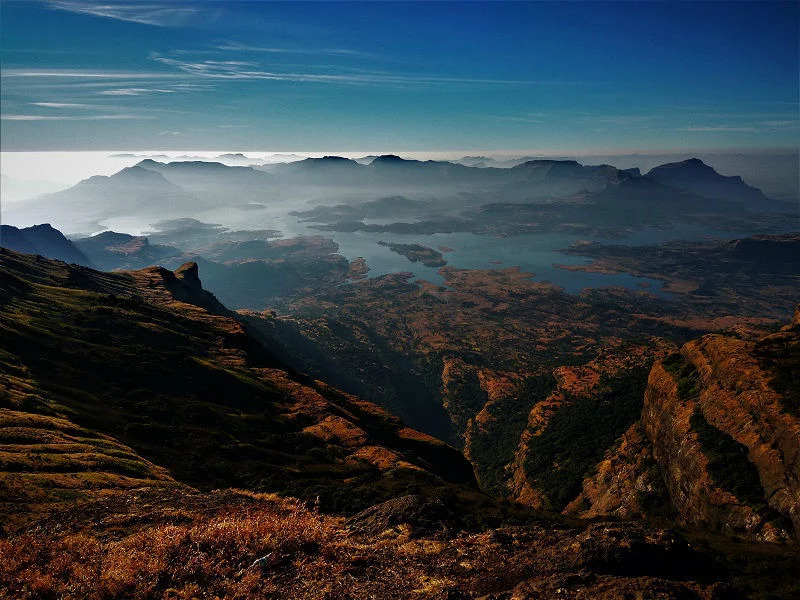

Ratangad
Ratangad is a fort located in the Western Ghats of Maharashtra, India. It is situated in the Ahmednagar district and is a popular trekking destination known for its scenic beauty and historical significance. Here is some information about Ratangad:
Location:
Ratangad is located near the Bhandardara region in the Sahyadri mountain range of Maharashtra. It is part of the Kalsubai Harishchandragad Wildlife Sanctuary.
Elevation:
The fort stands at an elevation of approximately 1,297 meters (4,255 feet) above sea level.
History:
Ratangad has a history dating back to the Yadava dynasty. It later came under the control of various rulers, including the Marathas and the British.
Architecture:
The fort is known for its architectural remnants, including gates, bastions, and a natural rock cavity called Nedhe or the ‘Eye of the Needle.’
Amruteshwar Temple:
At the summit of Ratangad, there is the Amruteshwar Temple dedicated to Lord Shiva. The temple is believed to be more than 1,200 years old and showcases Hemadpanti architectural style.
Trekking to Ratangad:
The trek to Ratangad is a popular activity for adventure enthusiasts. The trekking trail passes through lush greenery, dense forests, and rocky terrain. It is considered to be of moderate difficulty.
Caves:
Ratangad has several caves, including the famous Ratangad caves, which are used by trekkers for overnight stays. The caves offer shelter and are located near the Amruteshwar Temple.
Viewpoints:
The summit of Ratangad offers panoramic views of the surrounding Sahyadri mountain range, including the nearby forts like Alang, Madan, and Kulang.
Best Time to Visit:
The best time to visit Ratangad is during the post-monsoon and winter months (October to March) when the weather is pleasant. Monsoon treks are also popular, but caution is required due to slippery trails.
Access:
The base village for the trek to Ratangad is Ratanwadi, which is accessible by road. The nearest town is Akole.
Ratangad Caves and Water Tank:
The fort has a unique water tank cut out from rock and a series of caves. The caves are a popular spot for trekkers to rest and enjoy the surroundings.
Before planning a trek to Ratangad, it’s advisable to check the current trekking conditions, weather forecasts, and ensure that you are well-prepared for the climb. The fort offers a combination of trekking adventure, historical exploration, and natural beauty.
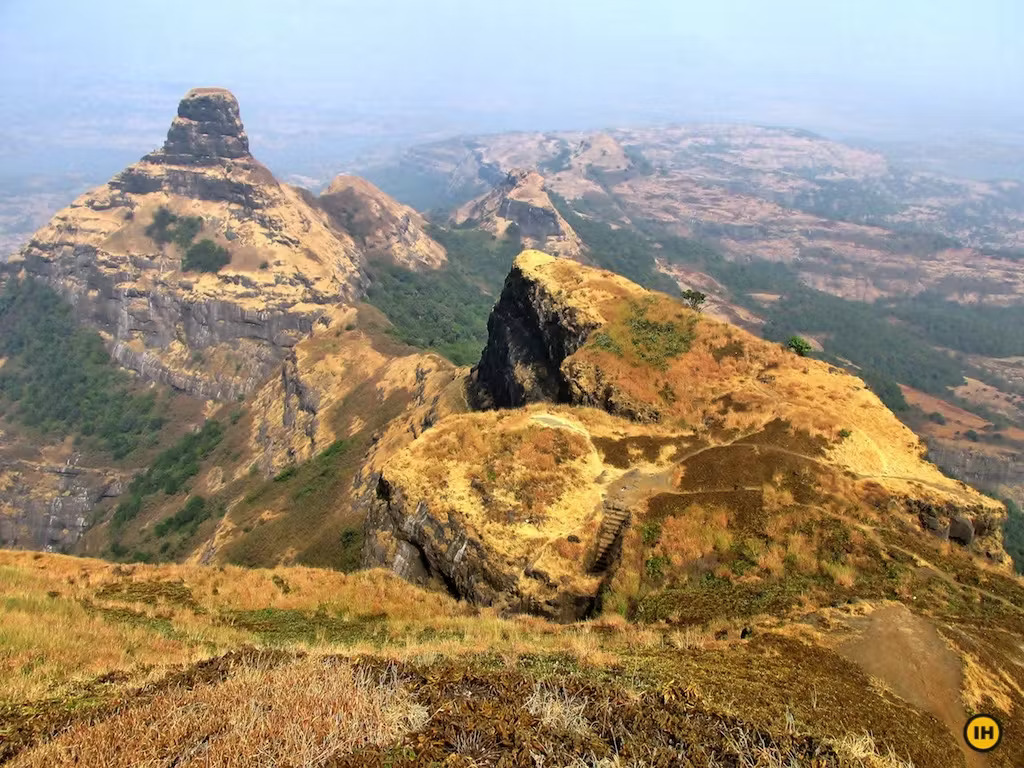

Sandhan Valley
Sandhan Valley, also known as the Valley of Shadows, is a picturesque and adventurous trekking destination located in the Ahmednagar district of Maharashtra, India. Here is some information about Sandhan Valley:
Location:
Sandhan Valley is situated in the Western Ghats of Sahyadri mountain range. It is part of the Bhandardara region and is close to the popular trekking destinations of Ratangad and Harishchandragad.
Formation:
The valley is carved between two mountains, making it a naturally formed gorge. The narrow and deep gorge is known for its distinctive rock formations, with rock walls rising up to 300 feet in height.
Trekking and Exploration:
Sandhan Valley is a popular destination for trekking and exploration. The trek involves navigating through the narrow passages, rappelling down rock patches, and wading through water pools. It is considered one of the most challenging treks in the region.
Scenic Beauty:
The valley is surrounded by stunning landscapes, rock cliffs, and lush greenery. The trek offers breathtaking views of the Sahyadri mountain range and the contrasting beauty of the deep rock formations.
Camping:
Many trekking enthusiasts choose to camp overnight in the valley, enjoying the serene environment and starry nights. Camping is an adventurous and unique experience in the heart of the valley.
Difficulty Level:
The trek through Sandhan Valley is considered challenging, and it requires a good level of fitness and endurance. Rappelling down rock patches and crossing water pools are part of the adventure.
Best Time to Visit:
The best time to visit Sandhan Valley is during the post-monsoon and winter months (October to March) when the weather is pleasant. Monsoon treks are not recommended due to the risk of flash floods.
Access:
The trek to Sandhan Valley usually starts from the village of Samrad, which is accessible by road. The nearest town is Akole.
Safety Precautions:
Due to the challenging nature of the trek, it’s essential for trekkers to be well-prepared with proper gear, guides, and safety equipment. It’s advisable to go with an experienced trekking group.
Permits:
Some treks in Sandhan Valley may require permissions, especially if it involves rappelling and camping. It’s advisable to check and obtain the necessary permits before embarking on the trek.
Before planning a trek to Sandhan Valley, it’s crucial to check the current trekking conditions, weather forecasts, and ensure that you are well-prepared for the challenging adventure. The unique terrain and stunning landscapes make Sandhan Valley a memorable destination for adventure seekers.

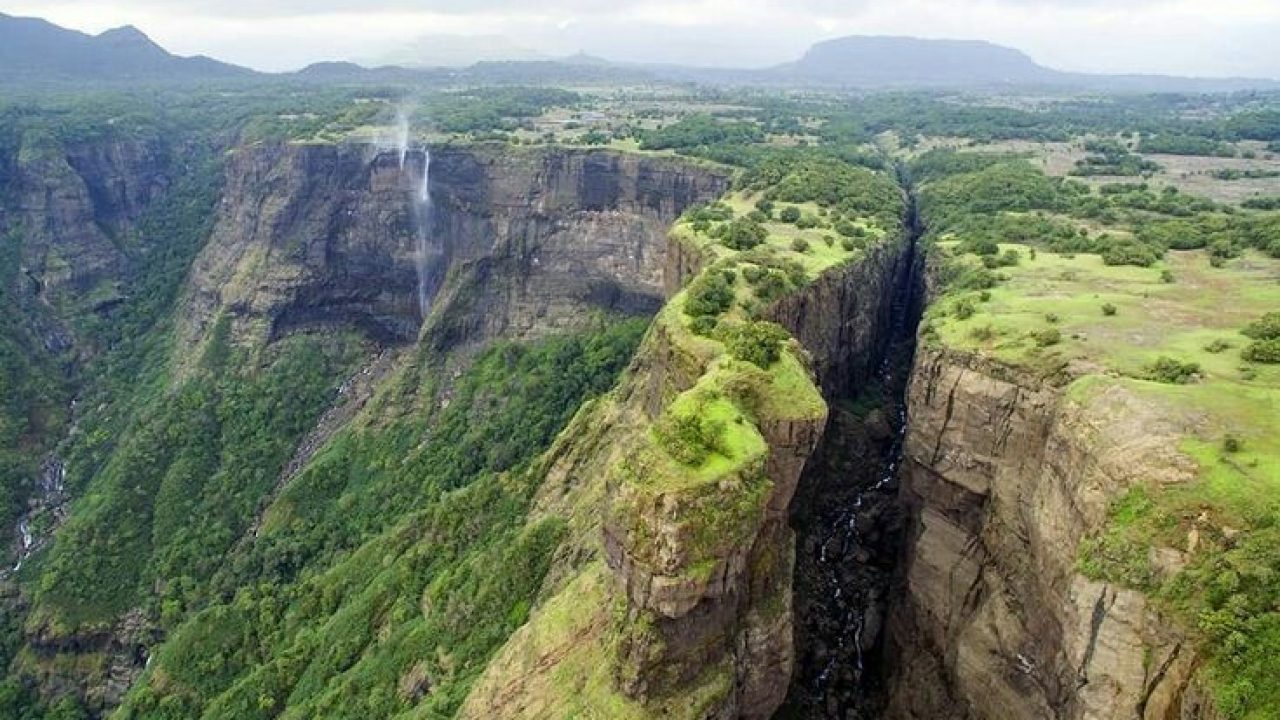
Prabalgad and Kalavantin Durg
Prabalgad and Kalavantin Durg are two prominent forts located in the Western Ghats of Maharashtra, India. They are situated near the popular hill station of Panvel and are known for their historical significance and challenging trekking trails. Here is some information about Prabalgad and Kalavantin Durg:
Prabalgad:
Location:
Prabalgad, also known as Kalabagad or Muranjan, is located between Matheran and Panvel in the Raigad district of Maharashtra.
History:
Prabalgad has a rich history and was initially built for defense purposes during the Bahmani Sultanate. Later, it came under the control of the Marathas and the British.
Architecture:
The fort has well-preserved fortifications, a large gateway, and remnants of structures. There is a Ganesh temple and a temple dedicated to Prabalgad’s patron goddess, Prabaldevi.
Trekking to Prabalgad:
The trek to Prabalgad is considered moderate to difficult. The trail passes through dense forests and steep climbs, offering panoramic views of the surrounding hills and valleys.
Camping:
Camping is a popular activity at Prabalgad, and many trekkers choose to stay overnight to experience the tranquility of the fort and witness the sunrise.
Kalavantin Durg:
Location:
Kalavantin Durg is situated next to Prabalgad and is connected by a col. It is slightly higher than Prabalgad.
History:
Kalavantin Durg is believed to have been built for a queen named Kalavantin. The fort served as a watchtower and provided a strategic vantage point.
Architecture:
The fort has a distinct pinnacle-like structure and is known for its steep and narrow rock-cut stairs that lead to the summit. The steps are carved into the rock, making it a challenging climb.
Trekking to Kalavantin Durg:
The trek to Kalavantin Durg is known for its thrilling ascent via the rock-cut stairs. It is considered one of the most challenging treks in the region.
View from the Top:
The summit of Kalavantin Durg offers breathtaking views of the surrounding hills, valleys, and the Prabalgad fort. The panoramic view is especially spectacular during sunrise and sunset.
Camping:
Camping is also a popular activity at Kalavantin Durg, and trekkers often combine the trek to Prabalgad and Kalavantin Durg in a single itinerary.
Trekking Tips:
- Both treks are challenging and require proper physical fitness.
- It’s advisable to trek with experienced guides, especially for Kalavantin Durg, given its steep rock-cut stairs.
- Wear sturdy trekking shoes and carry sufficient water, snacks, and essential trekking gear.
- Before planning a trek to Prabalgad and Kalavantin Durg, it’s important to check the current trekking conditions, obtain necessary permits (if required), and ensure that you are well-prepared for the challenging ascent. The forts offer a unique c
- ombination of historical exploration and thrilling trekking experiences.

